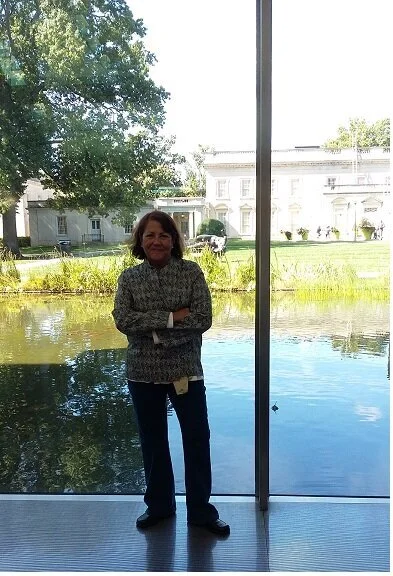Statement
Ana Rendich is a visual artist born in Argentina. She studied Scenic Design at Universidad del Salvador in Buenos Aires before moving on to study Costume Design at the Instituto Superior de Arte at the Teatro Colón, one of the world’s premier opera houses.
The world of interiority, where consciousness is almost everything… how we coexist with a particular area and each other, displacement, and collective mourning are prominent matters in her work and shows in a spectral presence of spiritual space. Her art is an encounter of arrangements where
there is this inter-playing observing our own relationships and how she translates this world of objects in relation with our own spiritual lives and experiences.
Her art invites the viewer to transfer their subjective experiences, untangling and creating a different point, when at the same time it is a proposition that enters the universal world….
Even though her paintings, prints and sculptures are her own work and are tied to her, they are not intended to be about her. The subject matter is greater than Rendich as an individual.
Rendich studio is like a lab, where space, form and meaning intertwine, shaping and filling her artworks.
She has been exploring the Japanese concept MA, it is a concept embedded on all our aspects in our life. Rendich went to a lecturer in NYC in 1994, given by Japanese architects and learned about the concept MA. Ma is associated with our relationship with our own space, internal and external and how we relate one with another one. Also, the interpretation of time and space, an interchange between matter and space, painting and sculpture. The emptiness in a space, or between spaces. Rendich has explained when someone close to us died, it leaves a kind of emptiness impossible to replace, that space has been made for this person, that emptiness would be there for ever…”
The physical closeness with the materials that she works gives space for a dialogue, without preconceived ideas, most of the pieces are done in a intuitive manner.
The sculptures, mixed media, printings and paintings emerge from a thought, an infinite path with no endpoint, where resolution is impossible. She has experienced with victims of violence that healing is almost impossible to achieve, many of her works are an attempt to bring comfort and create safe spaces. The works are fragments of what has been lost, negated, and postponed. Their structures are a form of reparation, a comforting tool, tying together absences and presences, sometimes in a meditative form and how it relates with the world around it.
In some of her sculptures, she incorporates epoxy, because of its reflective or opaque property, but she changes it, leaving her own fingerprints. For her colors are mainly a tool that reveals presence. In certain works, the observer can see the ghostly effect generated by the reflection created by the mixed media rendered with vagueness, illustrating the transient and mercurial nature of reality.
When she is working, she finds the colors as she goes along. Upon seeing her art, many find that the colors draw their attention before anything else. The story behind these colors is born by the interplay between these colors. It is not color itself that matters most to her. The whole composition makes the work, how each color relates with each other…. the togetherness, is what makes the work, but also the space in between. She doesn’t plan ahead colors, it comes up in the making. The study of the space is essential for her, and how each piece interact with the other as a whole unity, and the emptiness in between.
.
Her work has been evolving and changing every year, incorporating new mediums and materials. Sculpture has helped her to expand, it gave her the chance to create bigger pieces than in painting or printing.
When she set the colors in her palette, is not a premeditated decision to make uplifting art or happy art...each piece is born that way. It is visually how she transforms the medium for that specific space...Probably is an interpretation of acute observations about life. And also the need to create hope and see that there is a possibility to live in a better world...
Rendich incorporates different elements, according with the sensibility of each piece, like the use or wood, fabric, metal, yarn and paper, besides oil, silicone, etc. I enjoy immensely the closeness with my materials, that intimacy…the tactile and physical connection too. It takes time to find materials that work with the guiding nature of my process. Also, getting the letters from WWII has been a long road, it took her years until she started to work with…the same with the materials from Worker’s Corner…
The relationship between space and the artwork is essential for Rendich. Every piece has a reason to be in that specific space.
Sculpture and mixed media allows her to expand and enjoy different mediums. She finds that both aids gave her the opportunity to connect with space, form and meaning, in a three dimensional form, leaving all decorative items aside, and help her to concentrate more in exploration, questioning and contemplation; even in colorful and playful compositions.
She sees the reflections, compositions, materials and surfaces as comforting presences. Space for criticism is essential in her art, to reflect about our own actions and broaden our civic decisions expanding our possibilities, in the service of creating a better world.
